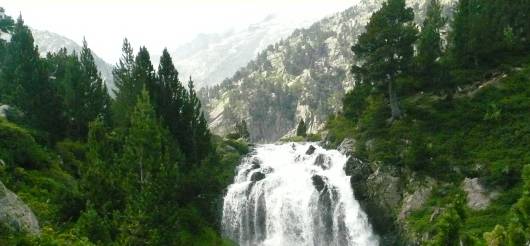Bennett, G., Carroll, N. & Hamilton, K. 2013. Charting new waters: state of watershed payments 2012. Washington DC, Forest Trends.
Bhatt, Y., Bossio, D., Enfors, E., Gordon, L., Kongo, V., Kosgei, J.R., Makurira, H., Masuki, K., Mul, M. & Tumbo, S.D. 2006. Smallholder system innovations in integrated watershed management (SSI): strategies of water for food and environmental security in drought-prone tropical and subtropical agro-ecosystems. International Water Management Institute Working Paper 109 and SSI Working Paper 1. Colombo, International Water Management Institute.
Brandes, O.M., Ferguson, K., M’Gonigle, M. & Sandborn, C. 2005. At a watershed: ecological governance and sustainable water management in Canada. Victoria, Canada, The POLIS Project on Ecological Governance.
CATIE & ASDI. La cogestión de cuencas hidrográficas en América Central. Programa Focuencas II. Grupo de reflexión en gestión de cuencas hidrográficas.
FAO. 1996. Planificación y ordenación de cuencas hidrográficas con ayuda de computadora - Tecnologías para la planificación nacional. FAO, Rome.
FAO. 1995. Monitoring and evaluation of watershed management project achievements. FAO, Rome.
FAO. 1977. Guidelines for watershed management. FAO, Rome.
German, L. & Taye, H. 2008. A framework for evaluating effectiveness and inclusiveness of collective action in watershed management. Journal of International Development, 20 (1): 99–116.
German, L., Shenkut A. & Admassu, Z. 2008. Managing linkages between communal rangelands and private cropland in the highlands of Eastern Africa: contributions to participatory integrated watershed management. Society & Natural Resources, 21(2): 134–151.
Magner, J. 2011. Tailored watershed assessment and integrated management (twaim): a systems thinking approach. Water, 3: 590–603.
Marquis, G. 2015. Reducing disaster risk in Pakistan through watershed management. Unasylva, 66(243/244): 2015/1–2.
Mekong River Commission & German Technical Cooperation Agency. 2009. Institutional arrangements for integrated land and water management. Contribution to an E-conference on integrated land and water resources management in rural watersheds, organized by the FAO Regional Office for Asia and the Pacific.
RBF Consulting. 2008. Watershed management. Integrating people, land and water.
Swallow, B. & van Noordwijk, M. 2008. Restoring the functions of watersheds. ASB Policy Briefs No. 9. ASB Partnership for the Tropical Forest Margins.
World Bank. 2008. Watershed management approaches, policies and operations: lessons for scaling up. Water Sector Board Discussion Paper Series No. 11.
Web references
http://www.worldagroforestry.org/programmes/african-highlands/archives.html African Highlands Initiative (AHI). Publications of the African Highlands Initiative (AHI) implemented by the Association for Strengthening Agricultural Research in East and Central Africa between 1995 and 2006 are available. Last accessed 22.05.2015.
http://www.watershedconnect.org/ Watershed Connect. Watershed Connect is an information platform established by Forest Trends to help scale up practice and policy that maximizes the economic and ecological benefits of healthy watersheds.. Last accessed 22.05.2015.

